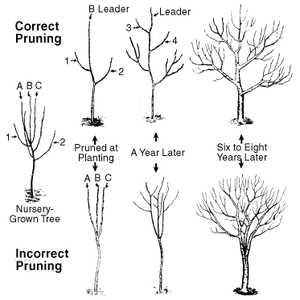- Why Pruning Grapes is Important
- Promotes Healthier Growth
- Improves Fruit Quality
- Increases Yields
- Controls Vine Size and Shape
- Facilitates Disease and Pest Management
- Conclusion
- The Best Time to Prune Grapes
- Tools You’ll Need for Pruning
- Steps for Pruning Grapes
- Tips for Shaping a Young Grape Bush
- 1. Prune the main stem
- 2. Train the branches
- 3. Remove suckers
- 4. Thin out excessive growth
- 5. Maintain a balanced shape
- 6. Keep track of the growth
- How to Train the Main Stem
- Pruning Techniques for Fruit Production
- Common Mistakes to Avoid
- Question-answer:
- When should I start pruning my young grape bush?
- How much can I prune off my young grape bush?
- What tools do I need for pruning a young grape bush?
- How do I know which branches to prune on my young grape bush?
- Do I need to prune my young grape bush every year?
- Can I prune my young grape bush during summer?
- Is there a specific technique to prune a young grape bush?
- Video: Prune Grapes Vines This Way & Grow Big Sweet Grapes

Pruning grapevines is an essential step in maintaining a healthy and fruitful vineyard. One important aspect of pruning is shaping a young bush before covering it. By pruning the vines in the early stages, you can help guide the growth and development of the plant, ensuring a strong and productive vine in the future.
When pruning grapes before covering, there are a few key tips to keep in mind. First, it’s important to remove any dead or diseased wood. This will help prevent the spread of disease and promote overall plant health. Additionally, thinning out the bush by removing some of the older canes will allow for better air circulation and sunlight penetration, which are both important for the growth and ripening of the grapes.
Another important aspect of pruning a young grape bush before covering is training the vine to the support structure. By carefully selecting and tying down the main shoots, you can encourage the vine to grow in a desired direction. This will help create a strong and balanced structure for the plant, allowing for better fruit production in the long run.
Overall, pruning grapes before covering is an essential task for shaping a young bush. By removing dead wood, thinning out the plant, and training the vines to the support structure, you can create a strong and healthy grapevine that will produce delicious fruits for years to come.
Why Pruning Grapes is Important
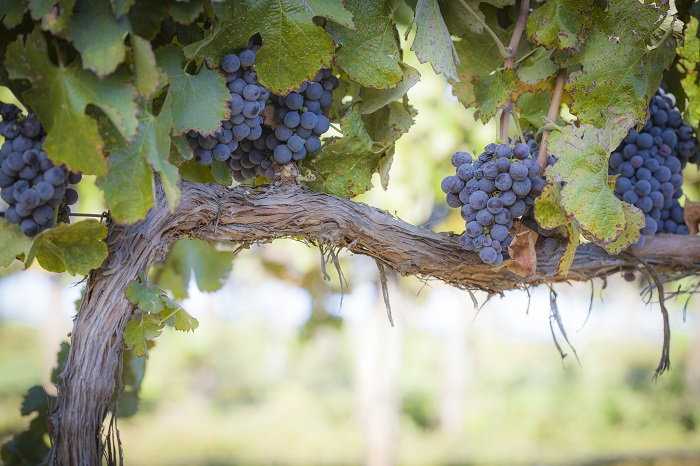
Pruning grapes is an essential practice in grape cultivation. It involves removing certain parts of the grapevine to promote healthier growth, improve fruit quality, and increase yields. Here are some key reasons why pruning grapes is important:
Promotes Healthier Growth
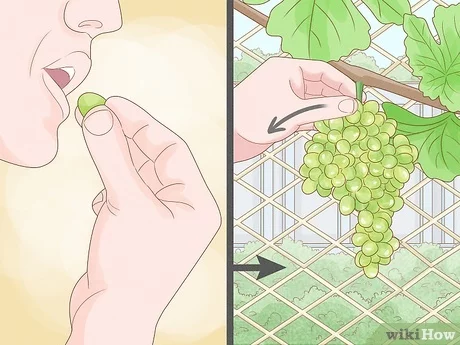
Pruning helps to stimulate new growth and allows the grapevine to allocate its resources more efficiently. By removing old and weak wood, the plant can focus its energy on developing new shoots, leaves, and fruit. This results in healthier, more robust vines that are better equipped to withstand pests, diseases, and adverse weather conditions.
Improves Fruit Quality
Pruning helps to improve the quality of grapes by increasing sunlight exposure and air circulation within the vineyard. Removing excess foliage and thinning excessive clusters allows the remaining grape bunches to receive more sunlight, which is essential for photosynthesis, sugar production, and flavor development. Adequate air circulation also reduces the risk of fungal diseases and mold formation on the grapes, thus improving their overall quality.
Increases Yields
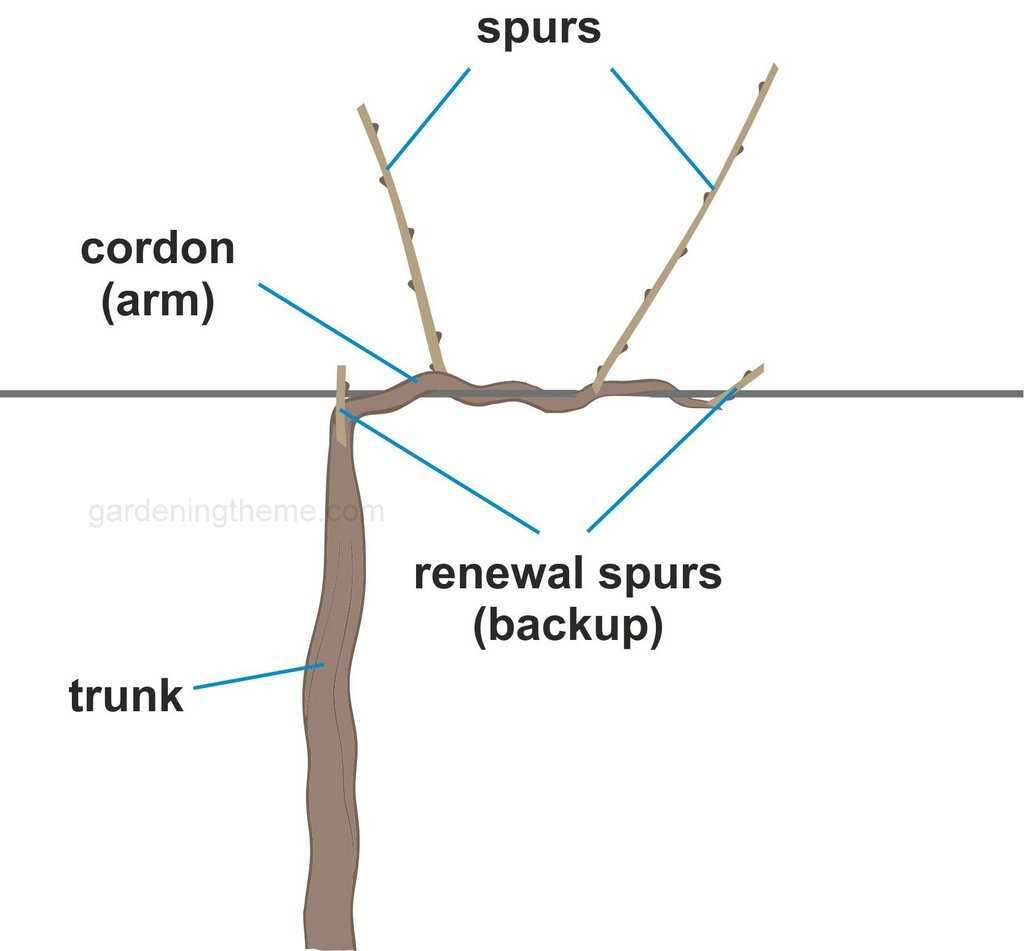
Proper pruning techniques can significantly increase grape yields. Removing unwanted shoots and thinning excessive fruit clusters allows the plant to allocate its resources more effectively. This helps to ensure that the remaining grape clusters receive the necessary nutrients, sunlight, and water, which can result in larger, juicier grapes and higher yields.
Controls Vine Size and Shape
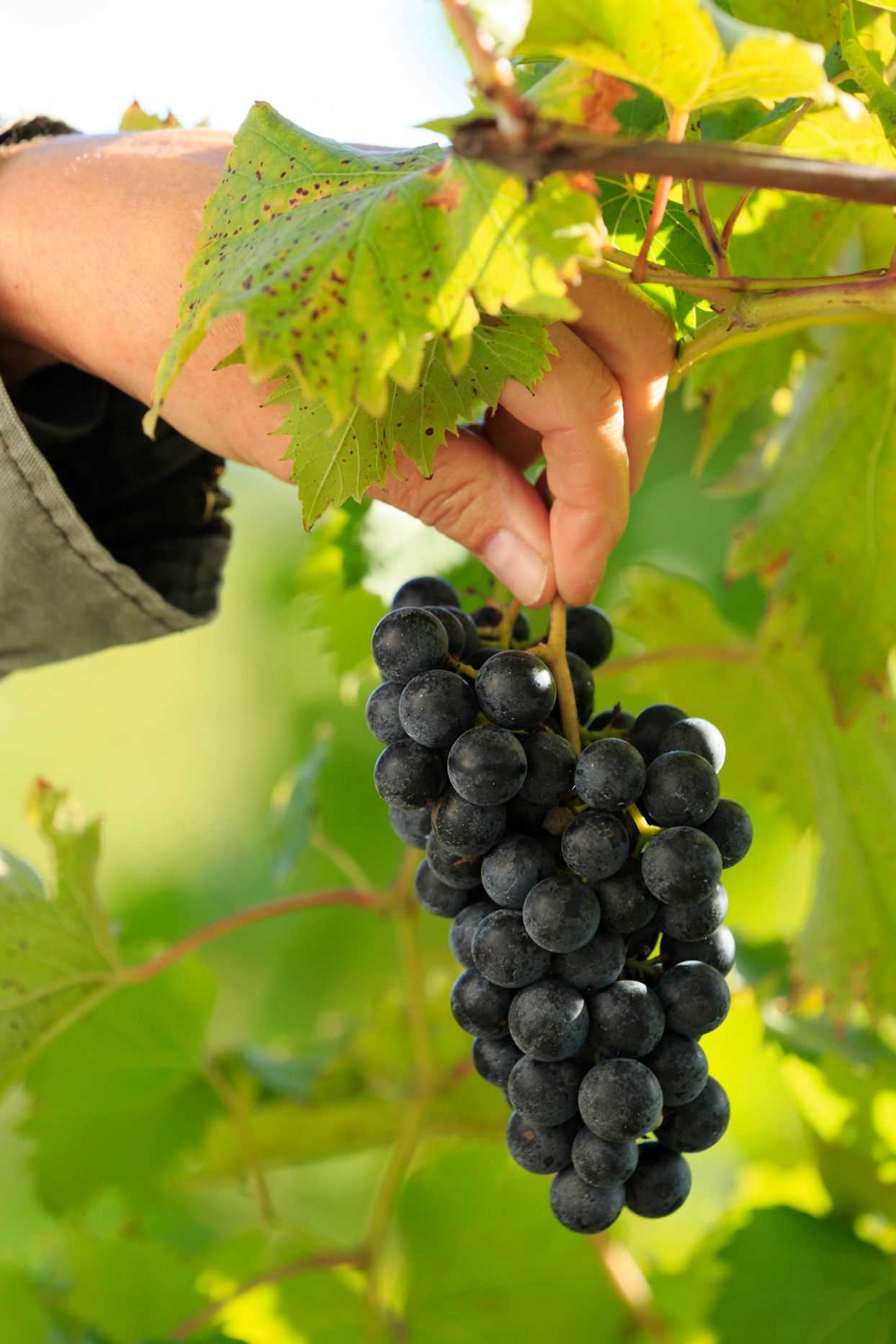
Pruning grapes allows growers to control the size and shape of the vine, making it easier to manage and maintain. By cutting back and training the vine, growers can direct its growth and maintain an ideal structure that allows for efficient canopy management, better pest control, and easy access for harvesting.
Facilitates Disease and Pest Management
Regular pruning removes dead, diseased, or damaged wood, which can harbor pests and diseases. By eliminating these potential sources of infection, growers can reduce the risk of diseases spreading throughout the vineyard and keep pests under control. Pruning also helps to improve air circulation, which can prevent the buildup of moisture and minimize the risk of fungal infections.
Conclusion
Pruning grapes is a crucial practice in grape cultivation that offers numerous benefits. It promotes healthier growth, improves fruit quality, increases yields, controls vine size and shape, and helps manage diseases and pests. By mastering the art of pruning, grape growers can ensure the long-term success and productivity of their vineyards.
The Best Time to Prune Grapes
Pruning grapes at the right time is crucial for their growth and productivity. The timing depends on the climate and the type of grapevine. Here are some key factors to consider when determining the best time to prune grapes:
- Dormant Season: Ideally, grapevines should be pruned during their dormant season, which is typically in late winter or early spring before new growth begins. Pruning during this time allows the vine to allocate its energy toward new shoot development.
- Avoid Freezing Temperatures: It is important to avoid pruning grapes when there is a risk of freezing temperatures. Pruning during cold weather can damage the vine and hinder its growth. It is best to wait until the frost has passed and the weather has stabilized.
- Consider Grape Variety: Different grape varieties have different growth characteristics and pruning requirements. Some varieties may require more aggressive pruning, while others may require minimal pruning. It is important to research and understand the specific needs of the grape variety you are growing.
Pruning grapes at the right time promotes healthy growth, improves fruit quality, and ensures better yields. It is recommended to consult local resources or seek advice from experienced grape growers to determine the optimal pruning time for your specific grape variety and region.
Tools You’ll Need for Pruning
Pruning grapes requires certain tools in order to efficiently and effectively shape your young bush. Here are the essential tools you’ll need for pruning:
- Pruning Shears: Also known as secateurs, pruning shears are a must-have tool for pruning grapes. They are specifically designed to make clean and precise cuts on small to medium-sized branches.
- Loppers: Loppers are larger than pruning shears and are used for cutting thicker branches. They have long handles which provide extra leverage and allow for easier cutting.
- Pruning Saw: A pruning saw is necessary for cutting large branches, especially those that are too thick for loppers. It has a sharp blade and a comfortable grip, making it easy to maneuver and cut through thicker wood.
- Gloves: Wearing gloves is important for protecting your hands while pruning. Choose a pair of gloves that provide both dexterity and protection from thorns and sharp edges.
- Sharpening Tools: Keeping your pruning tools sharp is essential for making clean cuts. Invest in a sharpening tool such as a sharpening stone or file to maintain the sharpness of your shears, loppers, and saw.
- Disinfectant Spray: To prevent the spread of diseases and infections, it’s important to disinfect your pruning tools after each use. A disinfectant spray or solution is recommended for this purpose.
- Bucket or Bag: A bucket or a bag is useful for collecting the pruned branches and debris. This makes it easier for cleaning up after pruning and keeps your garden tidy.
By having these tools ready before beginning your pruning session, you’ll be well-equipped to shape your young grape bush effectively and help it grow and thrive.
Steps for Pruning Grapes
Pruning grapes is an essential task that helps to promote healthy growth, improve fruit production, and maintain the overall shape and size of the grape bush. Here are the steps to follow when pruning grapes:
- Choose the right time: Pruning grapes should be done during the late winter or early spring, before the new growth begins.
- Gather the necessary tools: Before you start pruning, make sure you have a clean and sharp pair of pruning shears, loppers, and a pruning saw.
- Remove any dead or damaged wood: Start by inspecting the grape bush and removing any dead or damaged wood. Cut back to healthy tissue, making clean cuts.
- Prune for shape: Look for any branches that are crossing or rubbing against each other and remove them. Also, trim back any branches that are growing in the wrong direction or overcrowding the bush.
- Thin out the canopy: Remove some of the older and thicker branches to allow more sunlight and airflow to reach the younger shoots and fruiting wood.
- Prune to encourage fruit production: Identify the one-year-old wood that will be the source of the upcoming year’s fruit. Trim these branches back to about 10 to 15 buds, leaving enough buds for future growth and fruiting.
- Remove suckers and water sprouts: Suckers and water sprouts are vigorous shoots that grow from the base of the plant or from the main trunk. Remove these shoots as they can sap energy from the main grape bush.
- Sanitize your tools: After pruning, clean and sanitize your pruning tools with a mixture of bleach and water to prevent the spread of diseases.
Following these steps for pruning grapes will help you maintain a healthy and productive grape bush. Remember, each grape variety may have specific pruning needs, so consult with a local expert or refer to variety-specific guidelines for best results.
Tips for Shaping a Young Grape Bush
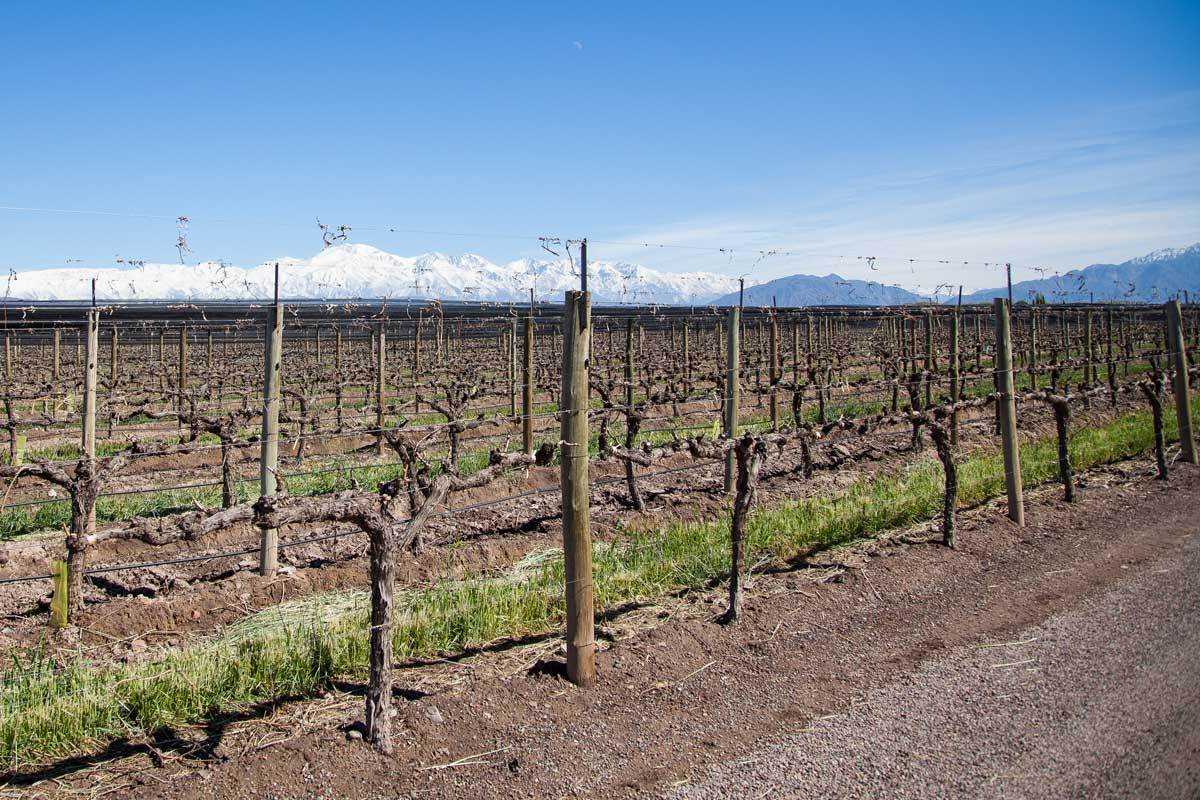
Shaping a young grape bush is crucial for its long-term growth and productivity. Here are some tips to help you achieve the desired shape and health for your grape plant:
1. Prune the main stem
When the grape bush is young, it’s important to prune the main stem to encourage strong and healthy growth. Remove any weak or damaged branches, and leave only the strongest and most vigorous ones.
2. Train the branches
As the grape bush grows, you need to train its branches to ensure proper shape and structure. Use stakes or trellises to guide the branches in the desired direction. This will help prevent tangling and ensure adequate sun exposure for the grape clusters.
3. Remove suckers
Suckers are the shoots that grow from the base of the grape bush. They can divert energy and nutrients away from the main plant, so it’s important to remove them regularly. Gently snap or cut off any suckers to maintain the main structure of the grape bush.
4. Thin out excessive growth
Over time, the grape bush may develop excessive foliage or branches. To promote better air circulation and light penetration, thin out the foliage by removing some of the excess growth. This will help reduce the risk of diseases and improve grape quality.
5. Maintain a balanced shape
Avoid letting the grape bush become too dense or one-sided. Regularly trim and shape the plant to maintain a balanced structure. This will ensure even growth and allow for easy management, harvesting, and maintenance of the grape bush.
6. Keep track of the growth
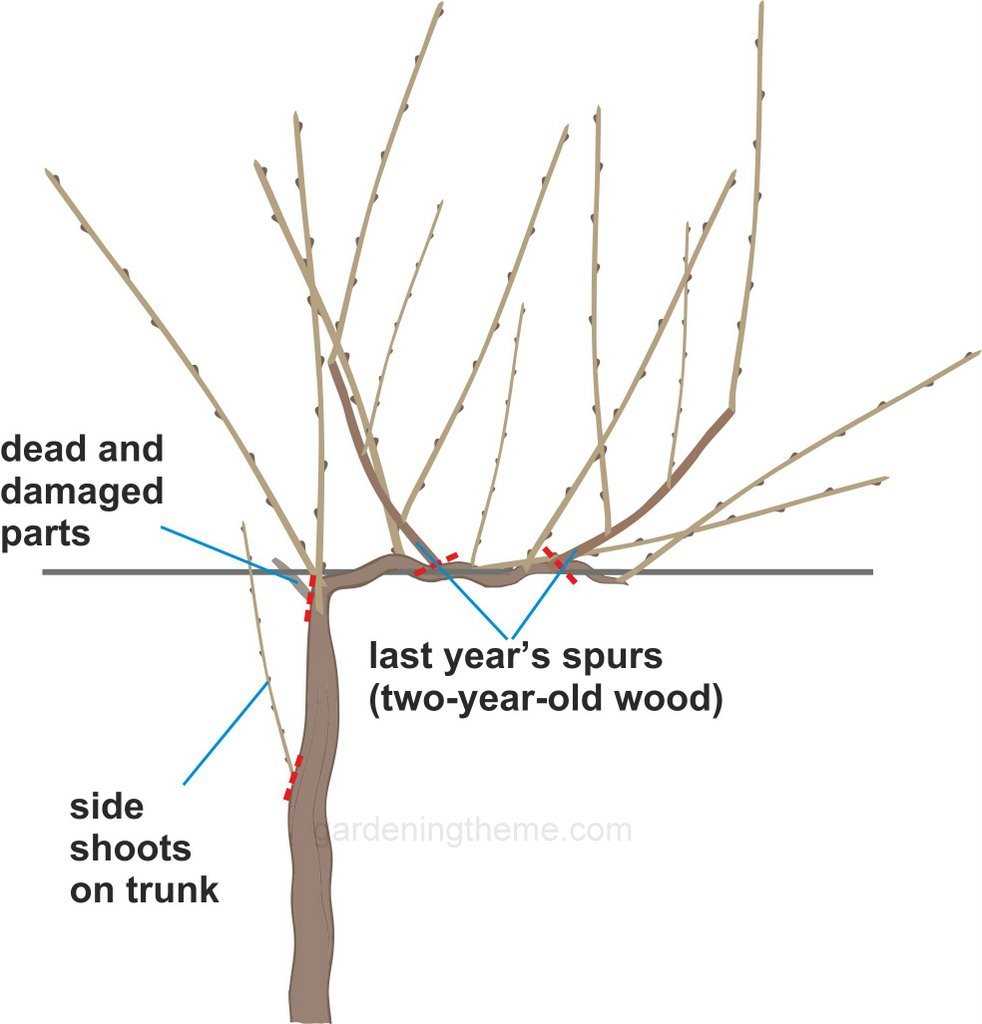
Document the growth of your grape bush throughout the season. Monitor its progress and make adjustments as needed. By keeping track of the growth, you can identify any issues or areas that require additional attention and give your grape bush the best care possible.
By following these tips, you can shape a young grape bush and set the foundation for a healthy and productive plant for years to come.
How to Train the Main Stem
Training the main stem of a grape vine is an essential step in the pruning and shaping process. By properly training the main stem, you can ensure the proper growth and development of the plant. Here are some tips on how to train the main stem:
- Choose the strongest shoot: Select the strongest shoot to become the main stem of the grape vine. This shoot should be straight and healthy, with good vigor.
- Remove competing shoots: Remove any competing shoots that may hinder the growth of the main stem. These shoots can be pruned back to the main stem or completely removed.
- Tie the main stem: Gently tie the main stem to a support structure or trellis using soft plant ties. This will help to keep the stem upright and prevent it from bending or breaking.
- Monitor growth: Regularly monitor the growth of the main stem and adjust the ties as needed. Make sure the stem is growing vertically and is not being pulled in any direction.
- Pinch off lateral shoots: Pinch off any lateral shoots that emerge from the main stem during the growing season. These shoots can divert energy away from the main stem and should be removed.
- Continue training: As the main stem continues to grow, continue to train it by tying it to the support structure or trellis as needed. Regularly prune and shape the vine to encourage proper growth and development.
By following these steps, you can effectively train the main stem of your grape vine and ensure its healthy growth and development.
Pruning Techniques for Fruit Production
- Timing: Pruning should be done during the dormant season, usually in late winter or early spring.
- Thinning: One important technique for fruit production is thinning. It involves removing excess shoots, canes, or branches to ensure that the plant’s resources are focused on fewer, high-quality fruits.
- Heading Back: Heading back refers to cutting back the main stems or branches of the plant to promote new growth and improve branching, which can result in a more compact and productive tree or bush.
- Renewal Pruning: Renewal pruning is essential to maintain the overall health and vigor of fruit-producing plants. It involves selectively removing old or unproductive branches to make way for new growth.
- Training: Training is an important technique for shaping and supporting fruit-producing plants. This involves guiding the growth of branches or canes to ensure proper sunlight exposure, airflow, and overall structure.
- Pruning Tools: It is essential to use proper pruning tools such as shears, loppers, or pruning saws to make clean and precise cuts. This helps in minimizing the risk of disease or damage to the plant.
- Pruning Cuts: Pruning cuts should be made at a 45-degree angle and as close to a bud or lateral branch as possible. This helps in promoting proper healing and reduces the risk of disease or pest infestation.
- Thinning Fruits: In addition to thinning branches, thinning fruits is also important for improving fruit quality and size. By removing excess fruits, the plant can direct its energy towards those that remain, resulting in larger and healthier fruit.
- Consult an Expert: If you are unsure about the proper pruning techniques for your specific fruit-producing plant, it is always a good idea to consult an expert or refer to specific guidelines for that particular plant species.
Common Mistakes to Avoid
- Over-pruning: One of the most common mistakes when pruning grapes before covering is over-pruning. It’s important to remember that grapevines need some foliage to produce energy through photosynthesis. Over-pruning can severely weaken the plant and hinder its ability to produce fruit.
- Pruning too late: It’s important to prune grapes before covering them to ensure that the plant is in the best shape possible for winter. Pruning too late can lead to a delay in bud development and increase the risk of frost damage.
- Not pruning enough: On the other hand, not pruning enough can result in a crowded vine with poor air circulation. This can increase the risk of disease and pest infestation. It’s important to strike a balance and remove enough foliage to facilitate air movement, sunlight penetration, and fruit development.
- Improper pruning technique: Pruning grapes requires some knowledge of the plant’s growth habits and proper pruning techniques. Incorrect cuts can damage the vine and lead to disease or infection. It’s essential to use sharp, sterilized tools and make clean cuts at the correct angle and location.
- Removing too many spurs: Spurs are the small, knobby growths on the grapevine that produce the fruiting canes. Removing too many spurs can reduce the vine’s ability to produce fruit. It’s important to leave an adequate number of healthy spurs during the pruning process.
- Pruning during the wrong season: Pruning grapes should be done during the dormant season, which is typically late winter or early spring before the buds start to swell. Pruning outside of this window can disrupt the vine’s growth cycle and impact fruit production.
- Not considering vine health: When pruning grapes, it’s crucial to consider the overall health of the vine. Pruning should be adapted based on the vigor and health of the plant. Weak or diseased vines may require more aggressive pruning, while healthy vines may need less pruning.
Question-answer:
When should I start pruning my young grape bush?
It is best to prune your young grape bush in late winter or early spring, before the growing season begins. This will help shape the plant and encourage healthy growth.
How much can I prune off my young grape bush?
When pruning a young grape bush, you should aim to remove about 90% of the previous year’s growth. This will help maintain the size and shape of the plant and ensure good air circulation.
What tools do I need for pruning a young grape bush?
For pruning a young grape bush, you will need a pair of sharp pruning shears or loppers, gloves to protect your hands, and a clean, sharp saw for cutting thicker branches. It is important to use clean and sharp tools to avoid spreading diseases.
How do I know which branches to prune on my young grape bush?
When pruning a young grape bush, you should look for any dead, damaged, or diseased branches and completely remove them. You should also remove any weak or thin branches that are not well positioned. It is important to leave the strongest and healthiest branches to promote optimal growth.
Do I need to prune my young grape bush every year?
Yes, it is important to prune your young grape bush every year to maintain its size, shape, and overall health. Regular pruning helps promote better air circulation, prevents diseases, and encourages optimal fruit production.
Can I prune my young grape bush during summer?
No, it is not recommended to prune your young grape bush during the summer months. Pruning during this time can stimulate new growth that may not have time to harden off before winter, making the plant more susceptible to cold damage. It is best to prune in late winter or early spring.
Is there a specific technique to prune a young grape bush?
Yes, there are a few techniques to consider when pruning a young grape bush. These include cutting back the main stem to encourage lateral branches, removing any shoots growing low on the trunk, and training the plant to a trellis or support system. It is important to follow proper pruning techniques to ensure healthy and productive grapevines.







